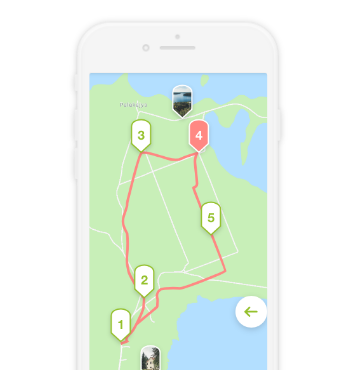Route: Aizkraukle – Koknese – Vecbebri – Sēlpils – Jēkabpils – Viesīte – Nereta – Rite – Aknīste – Zasa – Dunava – Zarasai – Dusetos – Kulionys – Skudutiškis – Utena – Užpaliai – Kupiškis – Biržai
The journey along the Selonian Route Segment will introduce you to beautiful nature landscapes, Selonian crafts, remind you of the origins of ancient Balts’ languages and the beauty of dialects and singing of multivocal songs.
Once inhabited, the hillforts rise up above present-day landscape as witnesses of ancient times. The route includes Vosgėliai and Kupiškis hillforts in Lithuania and Dignāja, Stupeļi and Sēlpils hillforts in Latvia. Craft skills, which were passed from generation to generation, are still preserved and appreciated. Visit the Jēkabpils History Museum Open-air exhibition “Sēļu sēta” (Selonian Courtyard) and the Viesīte Museum “Selonia” (“Sēlija”) to see life-size Selonian houses and household articles, while the various creative workshops and craft centres, such as the Creative House “Baltaine” and the Craft Centre “Rūme” are open to teach you ancient skills and crafts.The beekeeper’s craft is demonstrated at the Craft Centre in Uoginiai and at the Latvian Beekeeping History Museum. If you are looking for secrets behind beer brewing, a visit to Lithuania’s best-known brewer Ramūnas Čižas in Dusetos is a must. For Balts, faith was strength, strong as an oak! Even language scientists believe that the origin of the Western Balts’ word “faith” is related to the oak. You might want to contemplate on this in the shade of the Stelmužė Oak. Since ancient times, springs were deemed to have healing properties: pay a visit to the ageless medicinal mineral water spring at Smardonė in Likėnai resort and Krokulė Spring in Užpaliai in Lithuania, as well as to Saltupju Holy Spring in Latvia. The Meļķitāru Trough Stone (Meļķitāru Muldakmens) served as a cult place and was attributed healing properties already since ancient times.
“Riekstiņi” is the museum of writer Jānis Jaunsudrabiņš, which will reveal you the world depicted in his famous novel “Baltā grāmata” (“White Book”). Kazimieras Būga’s native farmstead in Pažiegė village will remind you of his hardy work to enrich the Lithuanian language, which resulted in the creation of the Great Lithuanian Dictionary. The Biržai Museum is an opportunity to learn about Stasys Paliulis, preserving and collecting not only music instruments, such as skudučiai, the wooden trumpet (daudytė) and the horn, but also unique multivocal songs. You will hear the dialect and multivocal singing of Selonians by visiting the museum and the sutartinės song festival in Kupiškis.
While on the route, take a look at Ladakalnis Hillock and besides Kirkilai karst lakes enjoy the diverse landscapes of Selonia from observation towers of Lake Sartai and elsewhere.

























.jpg)







Reviews